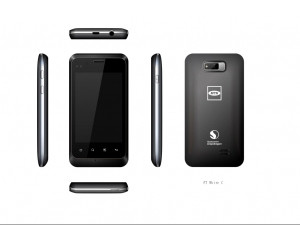
While low-cost smart devices are critical to bridging SA's digital divide, entry-level smartphones have hit a wall in terms of pricing, with the minimum threshold of R500 remaining stagnant - and prices increasing - over the past year.
The latest case in point is Vodacom's new R799 Smart 6 Android phone, which was released yesterday. Prior to that, in August last year, the company brought a R549 device to market and vowed to work towards bringing the price barrier down.
Vodacom rival MTN has also ventured into the low-cost smartphone market with its Steppa range of devices, the first of which retails at R499, while a follow-up version came to market at R999. Meanwhile, in a competitive bid, MTN this morning said it had slashed the price of the Steppa 2 smartphone from R999 to R799, effective immediately.
Reviewing 2015 so far in terms of smartphone trends, World Wide Worx MD Arthur Goldstuck says the "biggest surprise of all" is that the entry-level hasn't shifted at all in terms of pricing. "From having sub-R500 phones a year ago, we now see most entry-level smartphones come in at between R500 and R600.
"That's a reflection both of the higher specs of entry-level phones and the extent to which manufacturing can only be streamlined so much at this stage."
Affordable level
ICT expert Adrian Schofield does not foresee the entry-level price of R500 going down as things stand, largely due to the exchange rate. "Even if phones are assembled here [in SA], the components are made overseas, so we are paying dollar prices. Manufacturers can't really afford to make smartphones much cheaper, while still offering decent functionality."
IDC's local analyst Joseph Hlongwane says, while the cost of manufacturing a low-cost smartphone has decreased over the years, the cost of bringing smartphones into SA has risen.
But all hope is not lost, he says, as long as the rand gains strength against the major currencies. "I think then we will start seeing smartphones retailing at less than R500. I also think the operating systems such as FireFox will bring prices below R500."
Africa Analysis analyst Ofentse Mopedi points out Vodacom indicated late in 2014 that the company was working to introduce smartphones priced at around $35 (about R430 at the current exchange rate). The company also noted at that time that the price of $50 for low-cost smartphones may be unaffordable.
If SA is serious about bridging the digital divide then low-cost smartphones are the way to go, says Mopedi. "We can roll-out free WiFi in as many areas as we possibly can, but if the majority of the people in those areas do not have devices to connect them, these initiatives will become a futile exercise."
He notes, soon after the MTN Steppa was launched (in January 2014), it became SA's second best-selling smartphone. "MTN also experienced a threefold average increase in data consumption among Steppa users."
Mopedi says this goes to show the impact of more affordable smartphones in the market is "immediate and very huge".
Quantifying costs
IEEE Spectrum, the flagship magazine and Web site of engineering and applied sciences organisation IEEE, has published a chart that outlines the actual cost to manufacturers of each smartphone component. The Smartphone Breakdown chart, compiled six months ago, uses Apple's iPhone and the Samsung Galaxy S range to compare component costs, and ultimately device costs, of each handset.
According to the data, Apple was able to produce its latest flagship, the iPhone 6, for $228 (about R2 800), while Samsung's S5 - the predecessor to the latest flagship that was only released in SA in April - cost the smartphone maker $215 (about R2 650) to assemble.
The three most expensive components, according to IEEE's interactive chart, are:
1. Electronic and metal components ("other electric and mechanicals") - making up 27.81% of the total cost to make the latest iPhone and 23.37% of the costs for the Samsung Galaxy S5.
2. Core electronics, which makes up 25.12% of iPhone 6 costs and 22.2% of Samsung Galaxy S5 costs.
3. Display ("display/touch panel/glass"), making up 17.72% in iPhone costs and 21.5% in Samsung costs.
These three components have been at the top of the list in terms of costs for the two companies compared for the past four generations of flagship smartphones.
Share